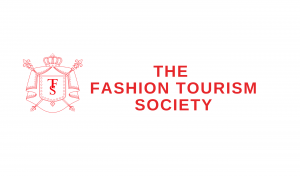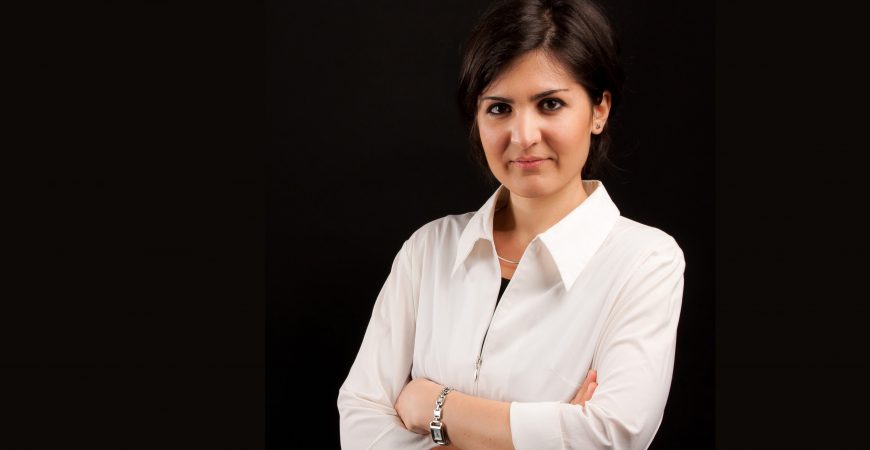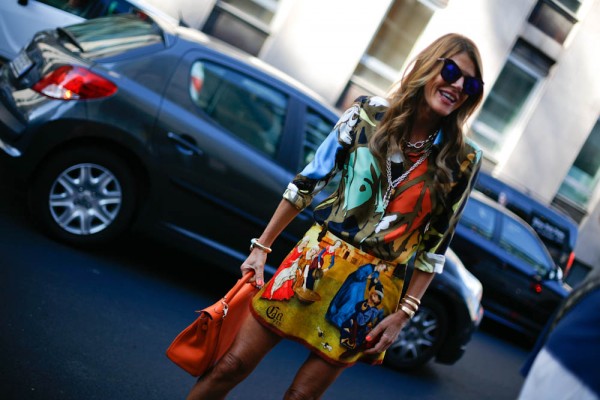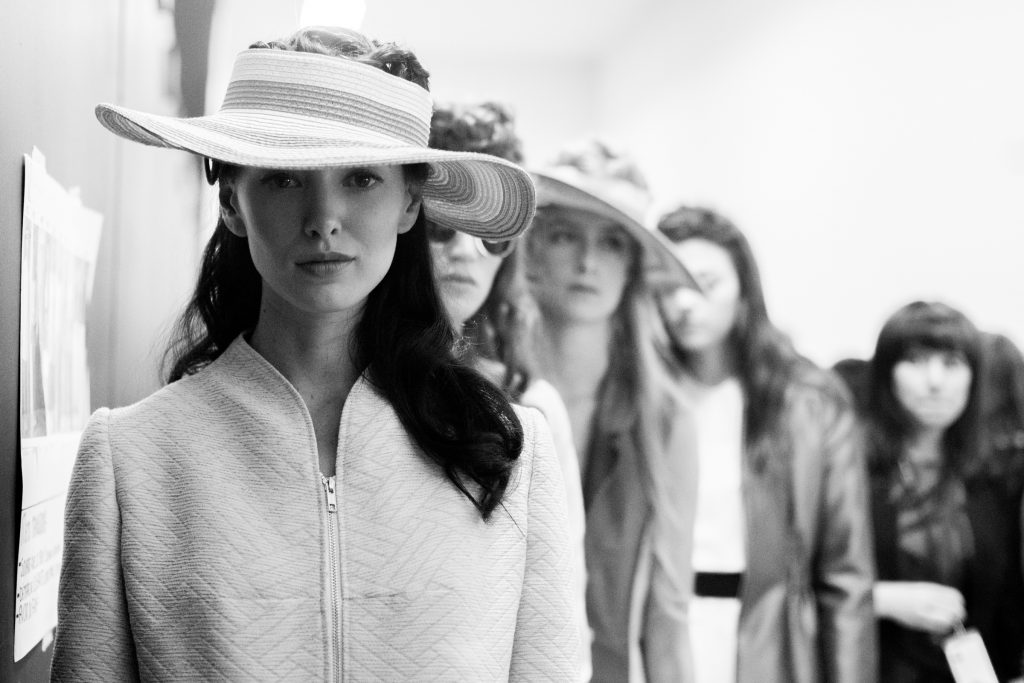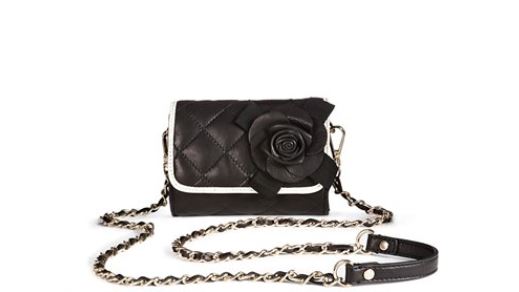1. Can you tell us a little about yourself?
I teach competitive strategy in creative industries and fashion management at Bocconi University in Milan and I am a faculty member of the Luxury & Fashion Knowledge Center and the Master in Fashion, Experience & Design Management at SDA Bocconi School of Management. Since 2013 I direct the Master in Brand & Retail Experience Management at Milan Fashion Institute (intra-university consortium between Bocconi University, the Catholic University of Milan, and the Polytechnic University of Milan) and I am consultant for companies in the fashion and luxury sector, mainly on topics regarding brand management, digital strategies and business sustainability.
In 2010 I created Bio-Fashion with the intention of raising awareness and providing information on themes pertaining to fashion and sustainable lifestyles. It is followed by companies, opinion leaders, and associations.
Finally, I am co-author of The Responsible Fashion Company with my Bocconi colleague Salvo Testa.
2. What inspired you to write the book about fashion and economic responsibility?
Despite great interest in the issue of responsibility in fashion from academics, students, professionals and managers at a national and international level, at this point in time there are very few books on CSR (Corporate Social Responsibility) with an industry-specific approach. This gap in the literature has motivated our desire to explore the topic.
Right from the blog’s first post and from the first page of this book, the objective was to devise a new model capable of integrating the aesthetic, competitive and ethical variables of fashion by placing people at the centre (consumers, employees, suppliers, etc.) along with their interaction with various stakeholders along the value chain.
3. What would you like to accomplish with the book?
I would like to accomplish a higher awareness of students, professionals and managers on the topic of responsible fashion.
4. What’s the difference between sustainable fashion and responsible fashion?
Sustainable fashion refers to the relation with two stakeholders: environment and society.
Responsible fashion refers to all the different stakeholders and contexts (including environment and society). Other contexts are added to fashion which characterise the sector itself: media; artistic, cultural and territorial; regulatory and institutional; and ethical value.
5. Do you think responsible fashion can only exist in bigger financially at ease companies?
On the contrary, it could be much easier for small-medium companies to implement a 360° responsibility. Transparency and traceability, for instance, could be implemented faster with a local manufacturing and knowing very well each single supplier. The more stretched is the supply chain, the longer it will take.
The link with the local territory is much stronger if the company has just one headquarter in the same territory and long term contracts and agreements with the same people.
6. What would be the impact of applying sustainable fashion guidelines in the industry on costs if retailers, buyers, customers and suppliers applied them?
The good thing of responsibility is that it is a journey and not a final objective. This implies that the responsibility practices can be modular, incremental and customized. For example the costs of making the stores more eco-sustainable could go from low, by renewing the lighting with led lamps, to higher, by acquiring a LEED certification. Same thing can be done in each activity of the value chain.
7. Do you think sustainable fashion starts with customers Why?
Customers play an important role in the activation of the virtuous cycle of responsibility. Nowadays they are increasingly interested in scrutinising—and having detailed information about— the entire production chain. However, it is equally true that it is not often possible to find out everything about a product’s history, origin and manufacturing techniques. In the vicious circle, without a clearly developed demand, companies in the textile & apparel sector choose not to invest in innovation; buyers, in turn, do not attend fairs dedicated to sustainable fashion and shops do not devote space to these products.
8. As mentioned in your book, responsibility for companies is often seen as a public relations tool, can you give us concrete examples of its benefits?
If companies are able to go from step 1, responsibility=PR tool to the final step, responsibility=source of competitive advantage, several benefits will be obtained: improvement of risk management; greater capacity to attract human capital; improvement of the business climate and of employee performance; increase in efficiency and optimisation of costs; increase in capacity to attract financial resources; reinforcing brand value.
A best practice I would like to mention is Brunello Cucinelli, an Italian luxury clothing company that applied the responsibility guidelines since it was founded.
In the beautiful context of verdant Umbria, Brunello Cucinelli creates quality products with a shrewd use of natural materials, with the involvement of sensitive, motivated and properly rewarded collaborators in the production process, with an image that seems at one with the historic urban settlement of an ancient civilisation, and with an intact and enchanting landscape, the medieval village of Solomeo (see Chapter 8 of the book).
Among the most important factors that increased the market value of the company during the public listing we can find its humanistic philosophy. Ethical and humanistic entrepreneurial model places people at the centre of the production process. It encourages the creativity of each worker and simultaneously develops within them a sense of profound participation in the group’s success and goals. This commitment is shared at all levels of the company and in external relations with “façonisti” and with clients around the globe, creating a strong level of loyalty and trust towards the company.
9. We often associate corporate sustainability to bigger public companies. Do you think it is a good idea for smaller companies to get the certifications? (cost and effort versus resources available). If not, how can they embark in the movement?
Getting a certification can be considered as a way to differentiate from other companies on the products or processes.
Certifications make sense for smaller companies as well: of course to take this decision it has to be clear if the certification is relevant to the customer! If the company is selling an intermediate product, the certification has to be relevant to the client; if the company is selling to the consumers, it has to be relevant to them. Depending on the business model and the brand identity, some responsibility practices will be more coherent than others.
10. You mention in the book that the definitions of “eco-friendly”, “ethical”, “sustainable”, “responsible” fashion and similar are often used improperly and indistinctly. What are the biggest misconceptions about responsible fashion?
This is not just about bamboo and hemp clothing. It is not just about having a conscience. The big potential here is related to the creation of shared value, as some scholars would say, or as I prefer to put it: integrating ethics and aesthetics across the value chain. Indeed, working towards more responsible fashion means trying to answer the specific needs of a wide range of stakeholders: environment, society, workers, consumers, art, culture, territory, media, institutions. It is all interconnected. This is what gives responsible fashion so much potential.
11. Do you think sustainable responsible fashion is compatible with fast fashion?
The most important fast fashion chains have questioned the traditional production logic and timing based on two seasonal collections (spring/summer and autumn/winter), by increasing the number of deliveries to shops and by dramatically reducing time-to-market and lead-time. The increasing delocalisation of production has generated an increasing globalisation of the supply chain. All of this has stimulated a corresponding surge towards new attitudes for companies, starting with increased attention to quality and a will to control the entire value chain. Recently, a new slow fashion movement has started to
appear; a return to the past as evidenced by models of supply based on proximity of manu-
facturing and the valorisation of craftsmanship.
It is true, some fast fashion companies are already showing many efforts towards
responsibility. It is a matter of compensation! Much more can still be done.
12. In the book, you explain that intensive usage of natural fabrics is against Bio-diversity but does that mean we should use more synthetic fabrics? Which option is better from a responsible company point of view?
It is not a matter of being fanatic. A responsible fashion company should be aware of
alternatives and look for more innovative fibers, being them natural or synthetic. Once
again, everything starts from the availability of information.
13. Do you think employees can responsibilize companies to sustainable fashion?
They can and they should! The potential of responsible fashion can be realized if an only if
a systemic approach will be implemented, thanks to the cooperation of all the stakeholders
involved, employees included.
14. Why do some companies think that CSR communication (promotion of its use) is the sole responsibility of the most important firms? And why isn’t it?
A responsible fashion company applies the “walk the talk” approach. Communicating responsibility means to be able to involve the customers: in order to do so, authenticity is needed! Focusing on communication only, would lead to green washing and ethical washing: on the long term, this behaviour would betray the trust of customers.
15. How could fashion and art make sustainability fashionable? (tell us about the Karl Lagerfeld example)
Historically fashion, an élite industry, has always benefited from strong associations with art and culture because it proposes aesthetic content equipped with an artistic component—pieces of art for daily use. Furthermore, clothes and accessories offer aesthetic elements which are not only the result of inspiration and creativity, but which aspire to express a sense of socio-cultural change: the emancipation of women with the Chanel image, the new Armani female ‘working outfit’, or the conceptual look of Prada’s contemporary women. The aesthetic component of the garment is intrinsically associated with the evolution of society, and often the artist and the creative designer understand this better than the business manager, who often looks more to the past than to the present or future. Therefore, the recovery of an organic and concrete relationship with the world of art and culture has much to do with the added aesthetic value which, in turn, is an essential part of the value proposition in fashion.
Karl Lagerfeld is a good example to talk about the strong link between fashion and art: as Fendi creative director in 2013 he supported the financing to restructure the well known “Fontana di Trevi” in Rome, iconic location for the company belonging to the LVMH luxury conglomerate.
Since Karl Lagerfeld is also creative director for Chanel, for the fashion show introducing Chanel’s spring/summer 2013 collection he chose to fill the hall of the Grand Palais in Paris with wind turbines and a runway that seemed to be made of solar panels. ‘Energy is the most important thing in life,’ said Karl to the journalists after the show. It is extremely interesting that a designer like Lagerfeld should decide to put the renewable energy debate on the agenda, drawing public attention to this issue. This shows the enormous potential of the fashion business to contribute to the sustainability of the entire system.
16. What in your opinion is the responsibility of the Media regarding sustainable fashion?
The way fashion companies communicate is a tool to affirm their identity and to spread their manifesto of values, which includes ethics and creates their reputations.
Communicating the responsibility is important because, with the input of all stakeholders, it helps to define the company’s identity.
Of course, also journalists talking about responsible fashion in magazines and newspapers have a very important role to generate interest, share information, educate the consumers, keep the interest high.
Photos via Francesca Romana Rinaldi, Brunello Cucinelli and Karl Lagerfeld.
Francesca Romana was our guest writer this month and wrote an article on The Responsible Fashion Company.
